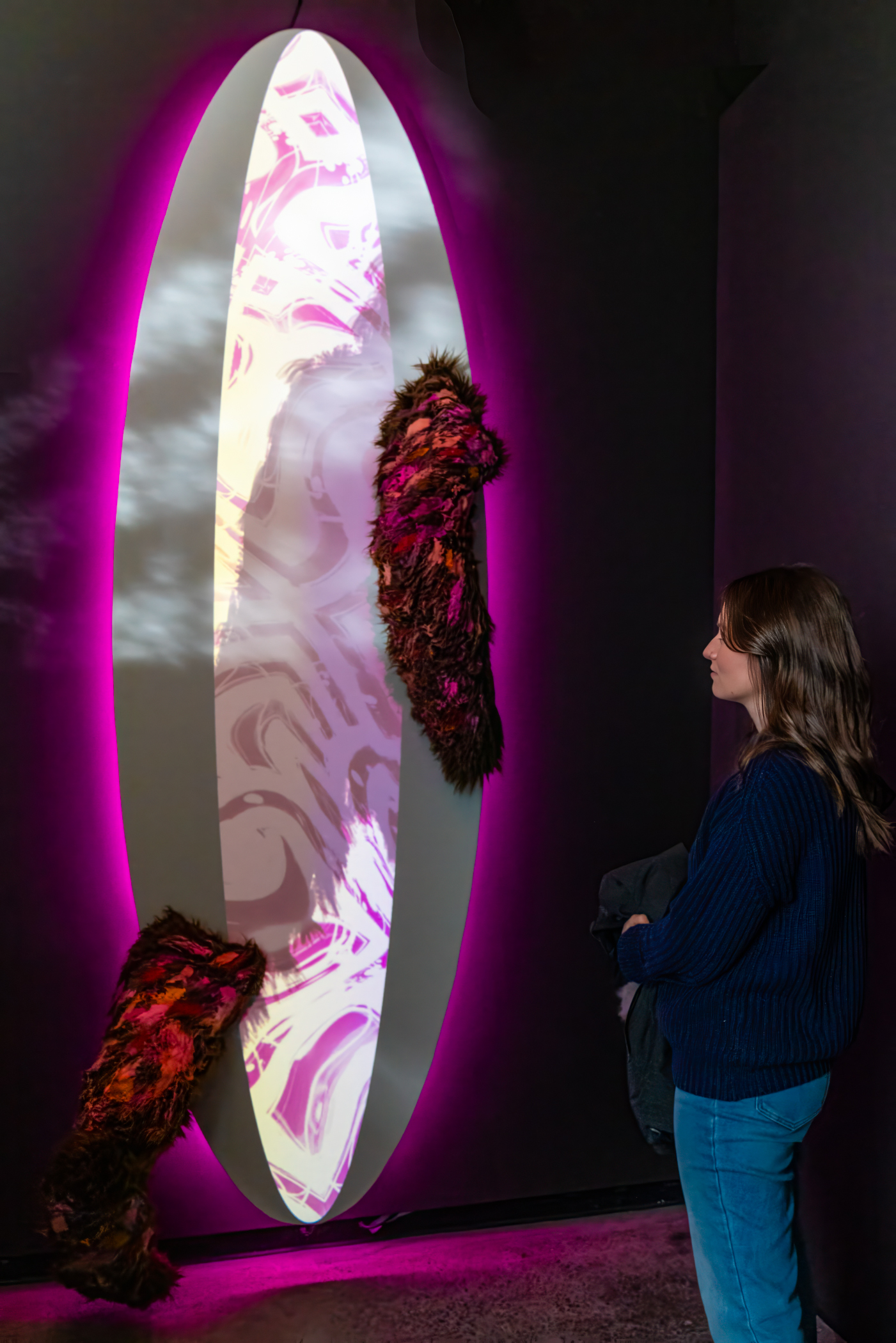
- Details
- By High Desert Museum
What does Sasquatch — also known as Bigfoot — represent to you? The unknown? Adventure? Mystery?
Sensing Sasquatch is a major exhibition at the High Desert Museum examining the primate-like, reclusive and elusive being in the context of the High Desert region. The exhibit will be on view through January 12, 2025.
Native peoples of the Plateau have long encountered and told stories about Sasquatch. Sensing Sasquatch explores Sasquatch’s past, present and future in the High Desert region through an Indigenous lens.
Works by five Indigenous artists are on view, including: Phillip Cash Cash, Ph.D. (Nez Perce, Cayuse), HollyAnna CougarTracks DeCoteau Littlebull (Yakama, Nez Perce, Cayuse, Cree), Charlene “Tillie” Dimmick (Warm Springs), Frank Buffalo Hyde (Nez Perce, Onondaga) and Rocky LaRock (Salish). Their original artwork is complemented by firsthand accounts and Sasquatch narratives displayed on the exhibition’s interior walls. Departing from the mainstream portrayal of Sasquatch, this exhibition offers insights into Sasquatch as a protective figure revered by many Indigenous peoples of the High Desert, as conveyed through direct quotes from the artists themselves.

Works by five Indigenous artists are on view, including: Phillip Cash Cash Ph.D. (Nez Perce, Cayuse), HollyAnna CougarTracks DeCoteau Littlebull (Yakama, Nex Perce, Cayuse, Cree), Charlene “Tillie” Dimmick (Warm Springs), Frank Buffalo Hyde (Nez Perce, Onodaga), and Rocky LaRock (Salish).
The original word for Sasquatch is “Sasq’ets,” which comes from the Halq’emeylem language of Coast Salish First Nation peoples from southwestern British Columbia. Sasquatch is bipedal and much taller than a human. Sasquatch’s habitat is often associated with the wet rainforests of the coastal Pacific Northwest, but in the High Desert, Sasquatch strides among the dry canyonlands, ponderosa pine forests and shrublands.
The question of whether Sasquatch exists is irrelevant to the exhibit’s theme since in many Indigenous traditions, Sasquatch is a bona fide living, breathing, sentient being. Indeed, for many tribes across North America, Sasquatch is regarded as an elder, a relative and a spiritual guide who appears to deliver important messages to humans. To Sensing Sasquatch featured artist Rocky La Rock (Salish), “Sasquatch is everything. He is our world, our provider, our brother. It is an honor to feed him, to protect him. He takes care of us.”

Before entering the exhibition there is an homage to the pop culture icon that Sasquatch has become, but visitors are then asked to leave these ideas and perceptions behind to consider another side of Sasquatch’s story. Outside the exhibition, a “bring-your-own” sticker interactive encourages visitors to reflect on the popularity and kitsch of mainstream Sasquatch representations. Visitors can place their stickers on the back of a car that’s driving away into the distance — symbolically transporting away their Sasquatch stereotypes and entering a new realm of experience and insight.
The High Desert Museum is open every day between 9:00 am – 5:00 pm and is located a few miles south of Bend, Oregon at 58900 US-97, Bend, OR 97702. Learn more about Sensing Sasquatch and the exhibition’s featured artists at highdesertmuseum.org/sensing-sasquatch.
“Enigma” by Frank Buffalo Hyde. Photo by Todd Cary.
Help us defend tribal sovereignty.
At Native News Online, our mission is rooted in telling the stories that strengthen sovereignty and uplift Indigenous voices — not just at year’s end, but every single day.
Because of your generosity last year, we were able to keep our reporters on the ground in tribal communities, at national gatherings and in the halls of Congress — covering the issues that matter most to Indian Country: sovereignty, culture, education, health and economic opportunity.
That support sustained us through a tough year in 2025. Now, as we look to the year ahead, we need your help right now to ensure warrior journalism remains strong — reporting that defends tribal sovereignty, amplifies Native truth, and holds power accountable.
 The stakes couldn't be higher. Your support keeps Native voices heard, Native stories told and Native sovereignty defended.
The stakes couldn't be higher. Your support keeps Native voices heard, Native stories told and Native sovereignty defended.
Stand with Warrior Journalism today.
Levi Rickert (Potawatomi), Editor & Publisher
